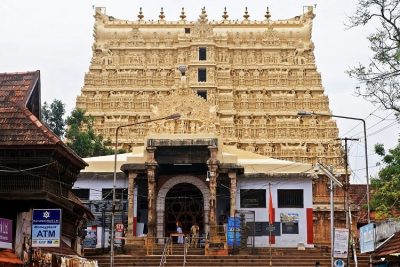Allahabad to Prayagraj: A Journey of a Historical City into the Modern Times
Share

Allahabad Junction railway station. (Superfast1111 / Wikimedia Commons)
The Greek philosopher Heraclitus once said that – nothing is permanent except change – and that is the absolute reality of the universe. Change is the way of life and that is how living individuals grow and develop. Humans make changes in and around them, in their surroundings, in nature and in every little thing they come across.
Without change, there is no future and had there been no change in the past, there would have been no present. Speaking of which, in recent times, the one thing that has kept most Indians talking is the renaming of the historic city of Allahabad in the Indian state of Uttar Pradesh, which will now officially become Prayagraj.
A brief history of Allahabad
As per the verbal folklore in Bundelkhand region, Allahabad derives its name from the ballads of a twelfth-century brave general called Alha, who served in King Parmal’s army. Alha fought against Rajput king Prithviraj Chauhan, the stories of which went on to be popularized as poetic narrations that spoke of his great valour. This led people into believing that the ancient city got its name from the Hindi ballads of Alha named Alha-Khand and that subsequently led to the city’s name – Allahabad
Some others believe that the city was initially named Kaushambi by Hastinapur rulers during 1200 to 900 BCE, until the Mughals invaded the country and changed the city’s name. Emperor Akbar in his chronicles – Akbarnamah – mentions the naming of the city in 1583. It is said that the Mughal Emperor first visited the city in the sixteenth century and was so greatly impressed by its location that he named it Allahabad or Alahabas, which literally translates to ‘Residence of God’. He built a fort named Ilahabad on the banks of the confluence of three rivers Ganga, Yamuna and Saraswati, which were and still are collectively known as Prayag. It was only when his grandson Shah Jahan took the throne, he renamed the city from Ilahabad of Allahabad, which until a few days ago, stuck with its identity.

Allahabad Fort. (Vyomtripathi / Wikimedia Commons)
History of the name ‘Prayag’
As per the Hindu mythology and scriptures, when Lord Brahma created the universe, it was at this specific place in the country that he offered his supreme sacrifice, which came to be known as prayag or ‘‘place of offering’. It is also said as per the Vedas, that when the three sacred rivers Ganga, Yamuna and Saraswati met at a point, that particular place came to be known as Triveni Sangam. And hence the place came to be known as prayag, which can also mean a ‘place of confluence’. Whatever the story, the name Prayag remained in the end.
The man behind the new name
A Hindu cleric named Ajay Mohan Bisht, who is popularly known as Yogi Adityanath in India, was sworn in as the Chief Minister of the northern Indian state of Uttar Pradesh. Renouncing his family life and home when he was only 21 years of age, Yogi Adityanath became a disciple of Mahant Avaidyanath, from whom he also received a few tips in Indian politics. Becoming a Member of Parliament at the young age of 26, Yogi Adityanath slowly rose in the political scenario of the country, finally landing the prestigious CM seat of Uttar Pradesh in March 2017.
Yogi Adityanath is the person who has been instrumental in changing the name of the historical city of Allahabad, on the request of his cabinet members in 2018, which currently awaits confirmation. His cabinet ministers had tried to forward a renaming proposal to the Centre on two occasions, once during CM Kalyan Singh’s reign between 1991 and 1992 and the other during current Home Minister Rajnath Singh’s tenure as CM of Uttar Pradesh between the years 2000 and 2002. Prior to the proposal of renaming Allahabad came into force, Yogi Adityanath was also instrumental in renaming another place in Uttar Pradesh. Weeks before Prayagraj was conceptualized, Yogi Adityanath, along with his cabinet ministers, forwarded the suggestion of rechristening Mughalsarai Railway Station as Deen Dayal Upadhyay Junction, naming it after the titular RSS ideologist. The official renaming ceremony of Mughalsarai station was held in August 2018, with a long list of BJP leaders present at the occasion.
The process of changing a city’s name
After the end of the British Rule in India in 1947, several Indian cities were renamed in due course of time, since people believed the names were more anglicized and sounded English. Procedures of changing an Indian city’s official name differ from state to state and it is the duty of the State Legislators to look into it. First, an MLA would raise a request in the form of a resolution, which has the proposal of changing a city’s name. The proposal is then carefully thought upon and finally when the resolution is deliberated and cleared from the State and Centre, the State Legislation makes necessary changes and gives a new name to the city, finally making it public.
Public reaction and after-effects
A lot of flak was received from all corners of the country, once the Yogi Adityanath-led UP government decided to finalize on a new name for the city of Allahabad. Scholars and politicians alike were of the opinion that changing the names of cities randomly do no good and that change was unnecessary and uncalled for. Not only would it affect the Allahabad University, Allahabad Bank or other prestigious institutions bearing the city’s name, but it would also add to the woes in the name of the Allahabad High Court. It would add an extra financial burden on the state government to rename the educational or financial institutions in accordance to the new name of the city. And that in turn, would pinch the pockets of the taxpayers in the state.
Historically the city has its own importance with places of great interest. The Triveni Sangam has its own cultural and religious significance, where the Kumbh Mela is held every twelve years. It is also the site where various national leaders’ ashes after their cremation have been immersed. Allahabad is also the site where the aftereffects of the Sepoy Mutiny of 1857 during the British Rule had taken place, with the massacre of countless Indians. The Allahabad Museum, which is one of the four national museums in the country, holds its own importance with rare collections of unique artworks, prehistoric paintings, and archaeological finds put up on display, talking of the city’s historical prosperity.
The city of Allahabad with its biodiversity of flora, fauna and culturally-different people thriving together in the same region, along with a national prominence is also a historically wealthy place, which has migrated towards a modern world, with its heart still in the right place.
Fact Analysis:
STSTW Media strives to deliver accurate information through careful research. However, things can go wrong. If you find the above article inaccurate or biased, please let us know at [email protected]













